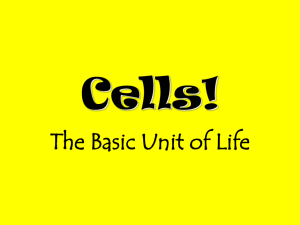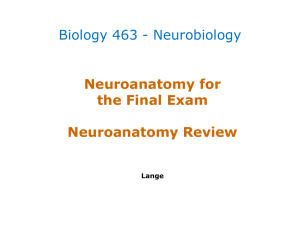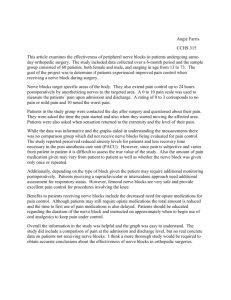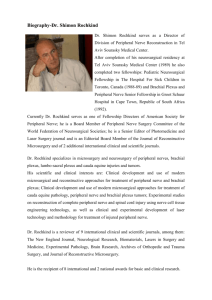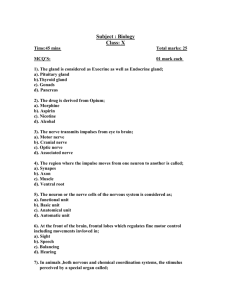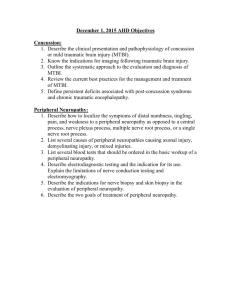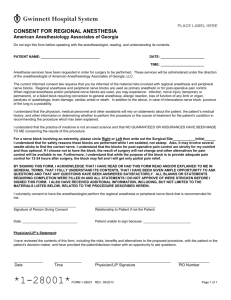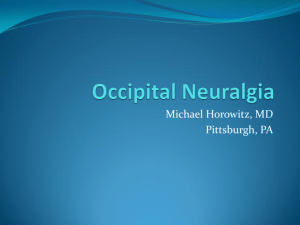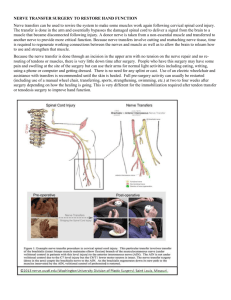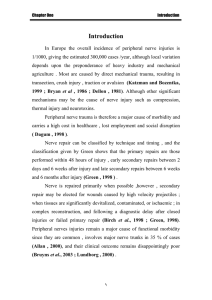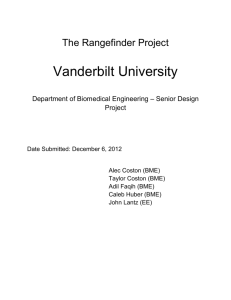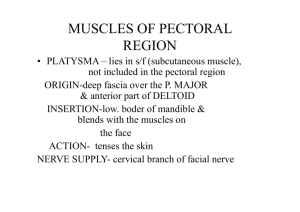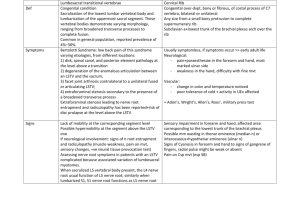Method and laser apparatus for nerve treatment
advertisement
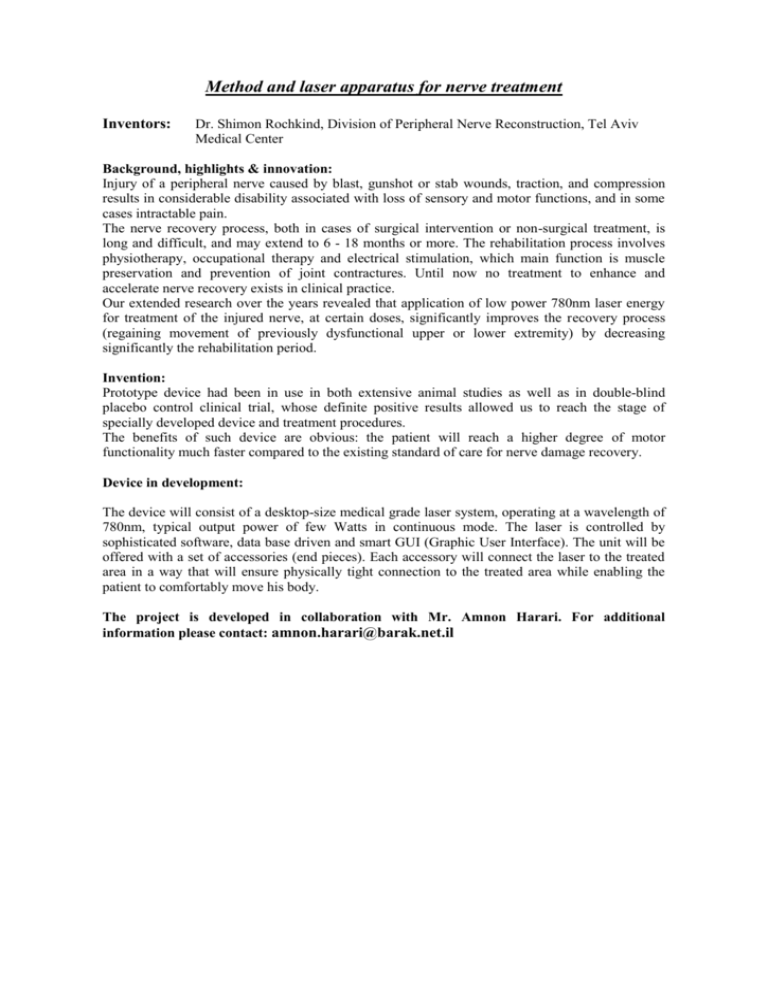
Method and laser apparatus for nerve treatment Inventors: Dr. Shimon Rochkind, Division of Peripheral Nerve Reconstruction, Tel Aviv Medical Center Background, highlights & innovation: Injury of a peripheral nerve caused by blast, gunshot or stab wounds, traction, and compression results in considerable disability associated with loss of sensory and motor functions, and in some cases intractable pain. The nerve recovery process, both in cases of surgical intervention or non-surgical treatment, is long and difficult, and may extend to 6 - 18 months or more. The rehabilitation process involves physiotherapy, occupational therapy and electrical stimulation, which main function is muscle preservation and prevention of joint contractures. Until now no treatment to enhance and accelerate nerve recovery exists in clinical practice. Our extended research over the years revealed that application of low power 780nm laser energy for treatment of the injured nerve, at certain doses, significantly improves the recovery process (regaining movement of previously dysfunctional upper or lower extremity) by decreasing significantly the rehabilitation period. Invention: Prototype device had been in use in both extensive animal studies as well as in double-blind placebo control clinical trial, whose definite positive results allowed us to reach the stage of specially developed device and treatment procedures. The benefits of such device are obvious: the patient will reach a higher degree of motor functionality much faster compared to the existing standard of care for nerve damage recovery. Device in development: The device will consist of a desktop-size medical grade laser system, operating at a wavelength of 780nm, typical output power of few Watts in continuous mode. The laser is controlled by sophisticated software, data base driven and smart GUI (Graphic User Interface). The unit will be offered with a set of accessories (end pieces). Each accessory will connect the laser to the treated area in a way that will ensure physically tight connection to the treated area while enabling the patient to comfortably move his body. The project is developed in collaboration with Mr. Amnon Harari. For additional information please contact: amnon.harari@barak.net.il


